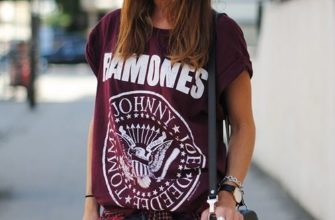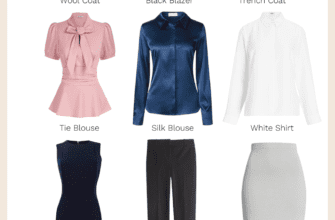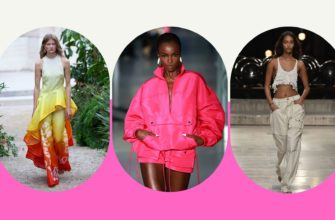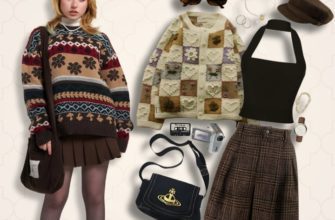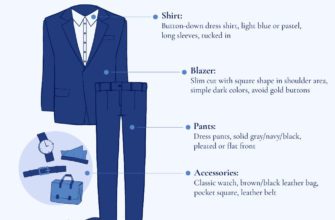In the world of fashion, there exists a rich tapestry of ever-changing trends and styles that have evolved over the centuries. From the early days of corsets and rigid outfits that constricted and shaped the female form, to the rise of athleisure wear that embraces comfort and functionality, the trajectory of fashion has been nothing short of remarkable. Though the landscape has shifted dramatically, one constant remains: the pursuit of self-expression through clothing.
Centuries ago, fashion was driven by the desire to adhere to societal norms and expectations, often at the expense of physical comfort. The corset, a symbol of femininity during the Victorian era, emphasized an hourglass figure, requiring women to endure tight-lacing and severe discomfort. This stark contrast to the freedom of movement we enjoy today highlights the incredible transformation fashion has undergone.
Revolutionize Your Health & Lifestyle!
Dive into the world of Ketogenic Diet. Learn how to lose weight effectively while enjoying your meals. It's not just a diet; it's a lifestyle change.
Learn MoreAs time progressed, societal attitudes towards fashion began to shift. The early 20th century saw a rebellion against the restrictive clothing of the past. With the emergence of new movements and ideologies, such as feminism and the rejection of social norms, women found themselves liberated from the confines of corsets and restrictive clothing. This era witnessed the birth of looser-fitting garments that allowed for greater ease of movement and self-expression.
Fast-forward to the present day, and the fashion landscape has undergone yet another seismic shift. The rise of athleisure wear embodies a new philosophy of style that prioritizes comfort and practicality without sacrificing aesthetic appeal. This trend has revolutionized the fashion industry, blurring the lines between activewear and everyday clothing. What was once deemed appropriate only for the gym or sporting activities is now a staple in contemporary wardrobes, symbolizing a shift towards a more relaxed and casual approach to fashion.
In conclusion, the journey of fashion is a testament to the insatiable human desire for self-expression and the rejection of societal restrictions. From the confines of corsets to the embrace of athleisure wear, fashion has evolved to reflect changing attitudes and cultural shifts. As we continue to navigate the ever-changing landscape of style, one thing is certain: the freedom to express oneself through clothing will always be at the forefront of fashion’s evolution.
- The Evolution of Fashion: From Corsets to Athleisure – [Your Website Name]
- The Transformation of Fashion
- From Restrictive Corsets to a Revolution
- The Influence of Corsets on Fashion
- The Rebellion Against Corsets
- The Rise of Casual and Comfortable Fashion
- From Sportswear to Streetwear
- The Emergence of Athleisure
- Fashion Today: A Blend of Style and Comfort
- The Integration of Athleisure in High Fashion
- Changing Perceptions of Fashion
- Questions and answers
The Evolution of Fashion: From Corsets to Athleisure – [Your Website Name]
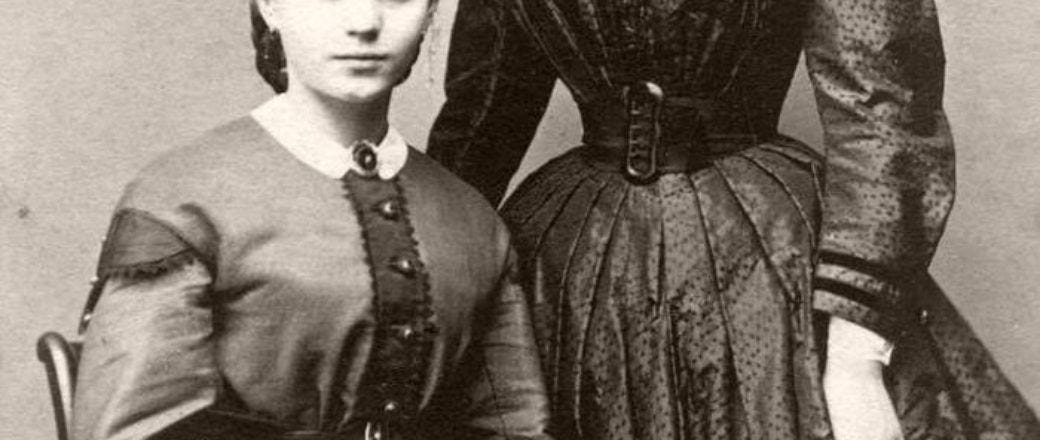
Fashion has undergone a remarkable transformation over the years, shifting from restrictive corsets to the trendy and comfortable athleisure wear we see today. This section explores the journey and changes that fashion has experienced, transcending time and embracing new styles and trends.
1. Revolutionizing Silhouettes: Fashion has constantly challenged traditional notions of beauty and the female form, leading to the demise of the corset and the rise of more liberated silhouettes. From the hourglass figure of the Victorian era to the sleek lines of the flapper dress in the 1920s, fashion has reflected the evolving ideals of femininity.
2. Innovations in Fabrics and Technology: The introduction of new materials and technological advancements has revolutionized the fashion industry. From the discovery of synthetic fabrics in the mid-20th century to the use of innovative performance materials in athleisure wear, fashion has embraced functionality and comfort like never before.
3. From Couture to Ready-to-Wear: The democratization of fashion has been a significant milestone in its evolution. The transition from exclusive, custom-made haute couture to accessible ready-to-wear garments has allowed fashion to reach a wider audience, making it more inclusive and reflective of societal changes.
4. From Status Symbol to Self-Expression: Fashion has transcended its role as a mere status symbol and has become a means of self-expression. The rise of street style, personalized fashion choices, and the influence of subcultures have all contributed to the growing importance of fashion as a medium for individuality and creativity.
5. The Athleisure Trend: Athleisure wear has taken the fashion industry by storm, blurring the line between sportswear and everyday fashion. This trend has given rise to stylish and comfortable clothing that seamlessly transitions from the gym to everyday life, reflecting the increasing focus on health and wellness in modern society.
As fashion continues to evolve, it is intriguing to observe how societal changes, technological advancements, and individual preferences shape the trends and styles that dominate the industry. The journey from corsets to athleisure demonstrates fashion’s ability to adapt and transform, reflecting the spirit of the times.
The Transformation of Fashion
In the realm of style and clothing, the world has witnessed a remarkable shift over the years. The constant evolution of fashion trends and designs has brought forth a revolutionary transformation in the way people choose to adorn themselves. This metamorphosis has been characterized by a departure from the rigid confines of corsets and the emergence of a more comfortable and sporty attire known as athleisure. It is fascinating to explore the transformative journey that fashion has undertaken, reflecting societal changes and personal preferences in unique and captivating ways.
The journey begins with the era of corsets, which symbolized restrictive beauty standards and the idealization of femininity. Women used to embrace these tight-fitting undergarments, enduring discomfort and physical limitations to achieve a desired hourglass figure. However, as time progressed, society started questioning and challenging these traditional norms. The emergence of innovative designs and the feminist movement played significant roles in shifting the fashion landscape towards a more liberating and inclusive direction.
Fast forward to the present day, athleisure has become a prominent trend that embodies the fusion of fashion and functionality. This contemporary style allows individuals to seamlessly transition between their active lifestyles and daily routines, without compromising on comfort or style. The emphasis has shifted from tight corsets to comfortable leggings and sneakers, making it an alluring choice for those seeking both fashion and practicality. Athleisure not only reflects our modern priorities, but also signifies the increasing acceptance of relaxed and versatile clothing in various settings.
The transformation of fashion is not solely confined to the physical aspects of clothing. It is also deeply intertwined with the evolution of societal values. The changes in fashion trends have often mirrored shifts in cultural norms, political ideologies, and technological advancements. Fashion has served as a powerful tool for self-expression, allowing individuals to make statements, challenge conventions, and showcase their individuality. From corsets to athleisure, each fashion trend has played a significant role in shaping our collective identity and reflecting the constant evolution of our society.
In conclusion, the transformation of fashion has been an extraordinary journey from the restrictive confines of corsets to the liberating world of athleisure. It has not only revolutionized the way we dress, but also symbolizes the ever-changing nature of societal values and personal preferences. As fashion continues to evolve, it will undoubtedly continue to shape and be shaped by the world around us, reflecting the diversity and innovation that define our contemporary era.
From Restrictive Corsets to a Revolution
The history of fashion is marked by a series of transformative shifts, each representing a departure from the previous era’s norms and expectations. In this section, we explore a pivotal point in the evolution of fashion, shifting away from the constricting corsets of the past towards a revolutionary concept that reshaped not only the way clothes were worn but also the perception of beauty, comfort, and self-expression.
In the earlier times, corsets were considered essential for women’s fashion, creating a rigid and often uncomfortable silhouette. The emphasis was on achieving a desired hourglass figure, where a tiny waist was highly desired and expected. This practice was not only physically restrictive but also symbolized societal expectations and female roles.
However, as time passed, the perception of fashion began to change. A new generation of thinkers emerged who challenged the traditional ideals and called for a revolution in clothing. The focus shifted towards the ideal of embracing one’s natural shape and allowing for greater ease and movement in everyday life.
This revolution in fashion brought about the birth of looser, more relaxed clothing styles that prioritized comfort and practicality without compromising on style. This newfound freedom allowed individuals to express themselves through fashion, breaking away from the constraints of societal norms and expectations.
The revolution in fashion also led to a paradigm shift in the perception of beauty. Rather than adhering to a predetermined ideal, this era celebrated diversity and individuality, embracing different body shapes and sizes. Fashion became a tool for empowerment, enabling individuals to express their unique personalities and celebrate their bodies’ natural form.
In conclusion, the transition from restrictive corsets to a fashion revolution was a significant turning point in the evolution of fashion. It liberated individuals from the physical and societal constraints of the past, allowing for a more inclusive and empowering approach to self-expression. This revolution continues to shape the fashion industry, emphasizing the importance of comfort, individuality, and diversity in today’s clothing choices.
The Influence of Corsets on Fashion
Corsets have played a pivotal role in shaping the trajectory of fashion over the centuries, leaving an indelible mark on the concept of dressing and style. Their influence spans across multiple eras, providing insight into societal ideals, women’s roles, and the ever-changing standards of beauty and body image.
The allure and mystique surrounding corsets have made them a symbol of femininity and seduction, embodying the idealized feminine silhouette. These garments, made of tightly fitted and boned fabric, have been used to cinch in the waistline and accentuate the curves of the body. Over time, corsets evolved from restrictive undergarments to iconic fashion statements that continue to captivate designers and fashion enthusiasts alike.
During the Victorian era, corsets were a ubiquitous presence in women’s wardrobes, reflecting the prevailing notions of modesty and femininity. They not only sculpted the waist but also served as a means of social control, reinforcing patriarchal norms and ideals of beauty.
Despite the controversies surrounding corsets, their impact on fashion cannot be undermined. They paved the way for innovative dress silhouettes, such as the Gibson Girl look during the early 20th century, which embraced a more natural, athletic figure while still maintaining a certain level of defined waistline. Corsets also influenced the prominent hourglass silhouette of the 1950s, popularized by iconic figures like Marilyn Monroe.
Today, although corsets are no longer a daily wardrobe staple, their influence can still be seen in contemporary fashion trends. The revival of corset-inspired tops, corset belts, and structured dresses pays homage to this historically significant garment, exploring themes of empowerment, self-expression, and the push-and-pull between conformity and liberation in fashion.
In conclusion, corsets have left an indelible mark on the fashion landscape, shaping ideals of beauty, defining gender roles, and serving as a symbol of femininity throughout history. Their influence continues to resonate in modern fashion, embracing both the traditional and the rebellious, while reminding us of the ever-changing nature of style.
The Rebellion Against Corsets
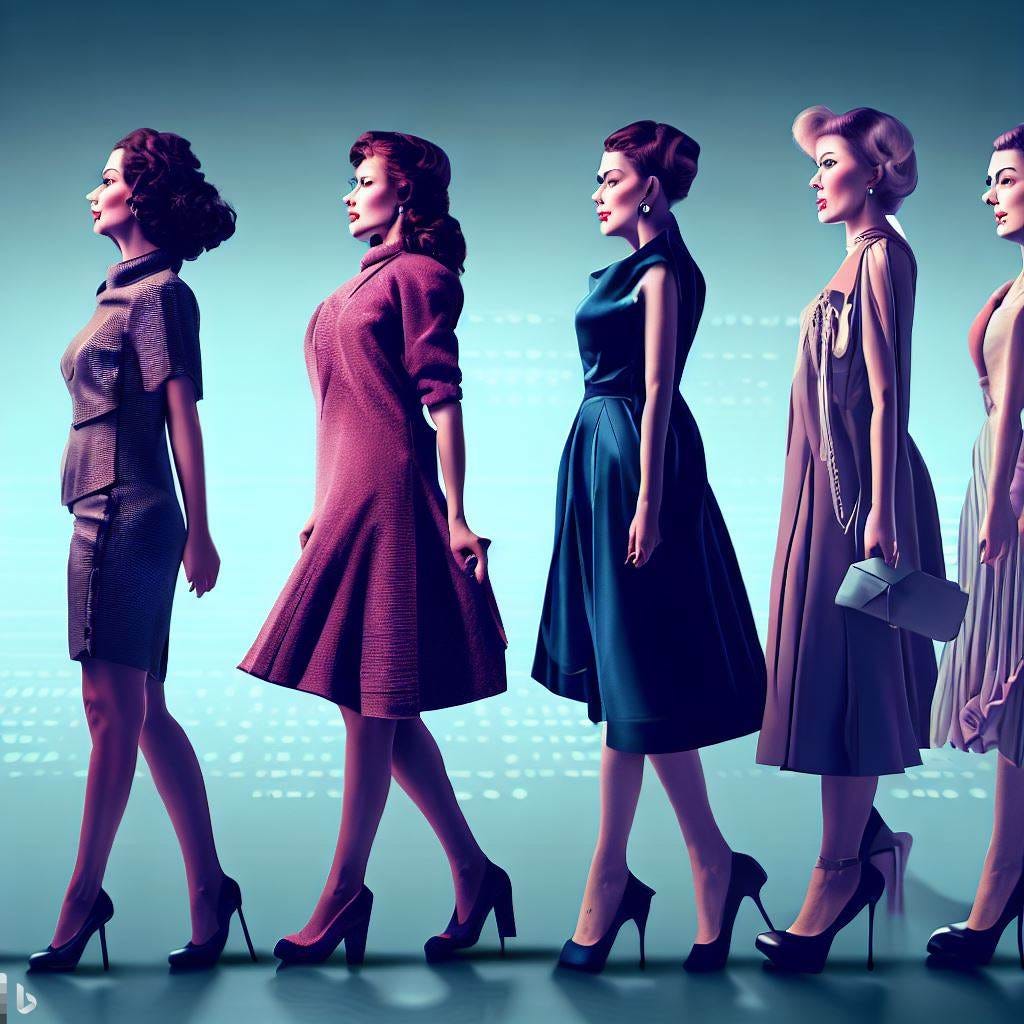
In the midst of a transformative era in fashion, a notable movement emerged, voicing opposition to the restrictive and often painful nature of corsets. This rebellion, characterized by a desire for freedom of movement and a shift towards more comfortable attire, marked a significant turning point in the history of fashion.
During this period, individuals began to recognize that the fashion industry had long dictated what was deemed beautiful and acceptable, often at the expense of physical comfort and well-being. A growing contingent of women and progressive thinkers sought to challenge these norms and embrace a more natural and relaxed sense of style.
The rebellion against corsets was not merely a rejection of the physical constraints imposed by tight-lacing, but also a statement of independence and a rejection of societal expectations. Corsets, once considered a symbol of femininity and refinement, became increasingly viewed as instruments of oppression and conformity.
The movement gained momentum as women and men alike started advocating for clothing that allowed for greater mobility and self-expression. The demand for looser garments and uncorseted silhouettes paved the way for the emergence of revolutionary designs that accommodated the changing attitudes towards fashion.
As the rebellion against corsets flourished, a renewed emphasis on comfort and functionality took hold. Individuals sought out fabrics that allowed greater ease of movement and embraced styles that celebrated the natural contours of the body. This shift in mindset laid the foundation for the subsequent evolution of fashion, paving the way for the rise of athleisure in modern times.
The Rise of Casual and Comfortable Fashion
In recent years, there has been a notable shift in the world of fashion towards a more relaxed and practical approach. This shift has been driven by changing societal norms and a growing emphasis on comfort and individual expression.
Gone are the days when restrictive corsets and uncomfortable high heels were the norm. Instead, people are now embracing casual and comfortable fashion choices that allow them to move freely and comfortably throughout their day.
This rise of casual and comfortable fashion can be attributed to several factors. Firstly, there has been a greater focus on well-being and prioritizing personal comfort. As people become more health-conscious and prioritize self-care, it is only natural that their fashion choices reflect this mindset.
Additionally, the rise of athleisure and activewear has played a significant role in shaping the casual fashion landscape. This trend has blurred the lines between athletic clothing and everyday wear, providing people with stylish options that are both practical and comfortable.
Social shifts have also contributed to the rise of casual and comfortable fashion. The rise of remote work and flexible schedules has led to a decrease in formal dress codes, allowing individuals to prioritize comfort and freedom of movement in their clothing choices.
It is important to note that casual and comfortable fashion does not mean sacrificing style or elegance. Many designers have embraced this trend and are creating pieces that combine comfort with sophistication, allowing individuals to feel both at ease and stylish at the same time.
All in all, the rise of casual and comfortable fashion reflects a changing mindset and a desire for clothing that allows individuals to express themselves while prioritizing comfort and practicality. As fashion continues to evolve, it will be interesting to see how this trend further shapes the industry.
From Sportswear to Streetwear
In the ever-changing world of fashion, there has been a significant shift from traditional sportswear to the more modern and urban style known as streetwear. This transition has brought about a new aesthetic that combines elements of athletic clothing with the edginess of street fashion, resulting in a trend that has captivated audiences worldwide.
One of the key factors driving the popularity of streetwear is its ability to seamlessly blend comfort and style. Instead of sacrificing comfort for fashion, streetwear embraces the functionality of sportswear while incorporating unique design elements that make a bold fashion statement.
The rise of streetwear can be attributed to the changing mindset of consumers who are increasingly valuing individuality and self-expression. In a world where personal style is celebrated, streetwear offers a diverse range of clothing options that allow individuals to showcase their personality and creativity.
- Streetwear brands often incorporate bold graphics, vibrant colors, and unconventional designs into their collections, setting themselves apart from more traditional fashion labels.
- Streetwear has also found its way into high fashion, with luxury brands collaborating with streetwear designers to create limited-edition collections that combine high-end craftsmanship with urban aesthetics.
- The influence of streetwear can be seen not only in clothing but also in accessories such as sneakers, backpacks, and hats, further solidifying its status as a dominant force in the fashion industry.
Overall, the evolution from sportswear to streetwear represents a shift in fashion culture, where comfort, individuality, and self-expression are valued just as much as trends and aesthetics. With its unique blend of athleticism and urban style, streetwear continues to push the boundaries of fashion, inspiring new trends and captivating audiences around the world.
The Emergence of Athleisure
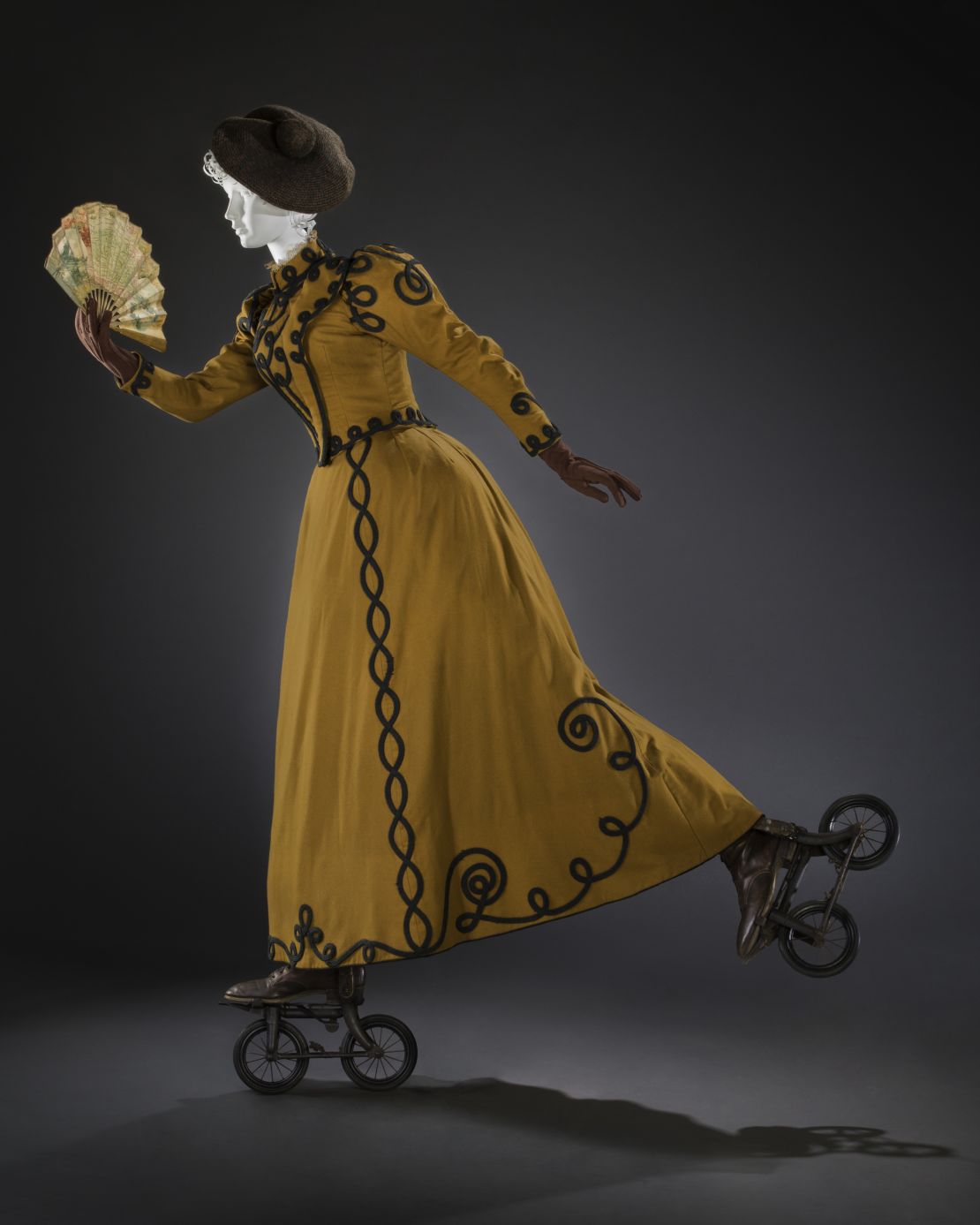
A new fashion trend has taken the world by storm, redefining the concept of comfort and style. This revolutionary phenomenon, characterized by the fusion of athletic wear and leisurewear, has gained immense popularity among fashion-conscious individuals. Athleisure embodies a more relaxed and versatile approach to fashion, transcending traditional boundaries and challenging conventional norms.
With its origins rooted in the increasing focus on health and wellness, athleisure seamlessly combines elements of athletic apparel with everyday fashion. It represents a lifestyle that values both physical activity and leisure, allowing individuals to effortlessly transition from the gym to social settings. The rise of athleisure signifies a shift in societal attitudes towards comfort, functionality, and self-expression through fashion.
One of the main driving forces behind the emergence of athleisure is the desire for clothing that accommodates the demands of modern life. In an era where people are constantly on the go, athleisure provides a practical solution that doesn’t compromise on style. The incorporation of sweat-wicking fabrics, stretchy materials, and innovative design details ensures maximum comfort without sacrificing fashion-forward aesthetics.
Moreover, athleisure challenges the traditional notion of dress codes by blurring the lines between sportswear and fashion. It encourages a more relaxed and individualistic approach, allowing people to express their unique sense of style while still maintaining a level of sophistication. With athleisure, it has become acceptable to wear leggings, sneakers, and sweatshirts outside of the gym, redefining what it means to be casually chic.
Furthermore, athleisure has also been influenced by the rise of wellness culture and the growing popularity of fitness activities. The emphasis on self-care and overall well-being has led to a greater demand for clothing that supports and complements active lifestyles. Athleisure provides a stylish solution that allows individuals to effortlessly transition between their workout routines and everyday life.
In conclusion, athleisure has emerged as a revolutionary fashion trend that combines comfort, functionality, and style. It represents a new way of approaching fashion, breaking free from the constraints of traditional dress codes. With its roots in the pursuit of better health and well-being, athleisure has become a symbol of our evolving lifestyles and changing fashion norms.
Fashion Today: A Blend of Style and Comfort
In the realm of contemporary style, modern fashion can be described as a harmonious fusion of elegance and ease, where comfort is just as important as the outward appearance. Today’s fashion industry emphasizes the importance of clothing that not only looks good but also feels good to wear, catering to the needs and desires of the ever-evolving fashion-conscious world.
Gone are the days where style was synonymous with sacrificing comfort. In this era, fashion designers and brands have redefined the norms by creating stylish pieces that prioritize the wearer’s comfort. From breathable fabrics to innovative designs, comfort has become an integral part of the fashion landscape.
One of the key factors driving this shift towards a blend of style and comfort is the increasing recognition of individuality. This recognition has led to a greater emphasis on self-expression through fashion, with individuals seeking to reflect their unique personalities and identities. As a result, fashion has become more inclusive, embracing a variety of styles and silhouettes that cater to different body types and personal preferences.
Another factor contributing to the rise of style and comfort is the changing lifestyle of the modern world. With fast-paced routines and hectic schedules, people are looking for clothing that can seamlessly transition from work to leisure, allowing them to feel effortlessly stylish throughout the day. The demand for versatile pieces that offer both aesthetic appeal and functional comfort has led to the rise of athleisure and casual wear, blurring the boundaries between activewear and everyday attire.
Moreover, the influence of technology in the fashion industry has opened up a new realm of possibilities for blending style and comfort. Innovations such as performance-enhancing fabrics, smart textiles, and 3D-printed garments have revolutionized the way fashion is perceived and experienced. With these advancements, fashion enthusiasts can now embrace cutting-edge designs that not only enhance their style but also provide optimal comfort and functionality.
In conclusion, fashion today is a captivating synergy of style and comfort. It celebrates individuality, caters to diverse lifestyles, and embraces technological advancements to offer a wide range of clothing options that combine aesthetic appeal with ease of wear. By embracing this blend of style and comfort, modern fashion continues to evolve, empowering individuals to express their unique sense of self while feeling comfortable and confident in their own skin.
The Integration of Athleisure in High Fashion
With the growing importance of comfort and practicality in modern society, athleisure has emerged as a dominant trend in the fashion industry. This style incorporates elements of sportswear into everyday attire, creating a harmonious balance between functionality and fashion.
The shift towards athleisure in high fashion represents a rebellion against the constraints imposed by traditional garments like corsets. Instead of prioritizing restrictive silhouettes and discomfort, contemporary fashion designers are embracing the freedom of movement and versatility that athletic-inspired designs offer.
One of the key aspects of the integration of athleisure in high fashion is the use of innovative fabrics and technologies. Designers are experimenting with materials that blur the boundaries between sportswear and luxury fashion, such as stretchable fabrics, moisture-wicking textiles, and performance-enhancing technologies.
Moreover, athleisure has also influenced the aesthetic of high fashion collections, with designers incorporating sporty details and motifs into their creations. From bold logos and stripes to athletic-inspired silhouettes and patterns, athleisure has infused a sense of dynamic energy into the world of high fashion.
The integration of athleisure in high fashion is not just about trends; it reflects a larger cultural shift towards a more inclusive and diverse perception of beauty. By embracing garments that prioritize comfort and functionality, fashion is becoming more accessible to individuals of all body types and lifestyles.
As athleisure continues to evolve and make its mark on the fashion industry, it is clear that it is not just a passing trend but a significant transformation in the way we perceive and embrace fashion. The integration of athleisure in high fashion represents a progressive movement that redefines the boundaries of style and encourages the celebration of individuality and self-expression.
Changing Perceptions of Fashion
Over time, the way people view and interpret fashion has undergone significant transformations. The way clothing is perceived, appreciated, and understood has evolved, and this evolution can be seen through various eras and cultural shifts. Exploring the changing perceptions of fashion reveals how societal values, technological advancements, and individual expression have shaped the way we perceive and engage with clothing.
- Shift in societal ideals: With the passage of time, societal ideals have influenced the way fashion is perceived. In the past, rigid dress codes and social norms dictated what was considered fashionable. However, as societies became more liberal and inclusive, there has been a shift towards embracing diversity and individuality in fashion choices.
- Technological advancements: The evolution of technology has played a significant role in altering the perception of fashion. The advent of the internet and social media platforms has allowed for greater accessibility to fashion trends, enabling individuals to explore and experiment with different styles. Moreover, technological advancements in textile production have led to the emergence of sustainable and eco-friendly fashion, altering the way fashion is perceived in terms of its impact on the environment.
- Expression of identity: Fashion has always been a means of self-expression. However, the perception of what constitutes acceptable self-expression has changed over time. Previously, conforming to societal norms was crucial, but today, fashion is seen as a tool for individuals to express their unique identities, breaking free from traditional stereotypes and embracing personal style.
- Cultural influences: Fashion is deeply intertwined with culture. Different cultures have their unique fashion traditions and values. As societies become more globalized, cultural influences have seeped into mainstream fashion, leading to a more diverse and inclusive industry. This shift has fostered a new perception of fashion as a celebration of cultural heritage and a means of promoting intercultural dialogue.
In conclusion, the perception of fashion has evolved immensely, driven by shifting societal ideals, technological advancements, the expression of individual identity, and the influence of diverse cultures. Today, fashion is not just about following trends but about embracing individuality, sustainability, and cultural appreciation. Understanding the changing perceptions of fashion gives us valuable insights into the dynamic nature of this ever-evolving industry.
Questions and answers
What is athleisure fashion and how has it evolved over time?
Athleisure fashion refers to the trend of wearing athletic clothing and footwear in everyday settings. It has evolved from being solely sports attire to a fashion statement. Initially, athleisure consisted of basic workout gear but has now expanded to include stylish activewear that can be worn both in the gym and in social settings.
Why did corsets go out of fashion?
Corsets went out of fashion mainly due to changing societal norms and the rise of women’s rights movements. Corsets were seen as restrictive and uncomfortable, and there was a growing movement for more freedom of movement and less emphasis on conforming to societal ideals of beauty. Additionally, advancements in clothing technology and the introduction of looser and more comfortable undergarments also contributed to the decline of corsets.
How have sustainability and eco-friendly practices influenced the fashion industry?
Sustainability and eco-friendly practices have had a significant impact on the fashion industry. Many fashion brands are now implementing sustainable practices by using organic materials, reducing waste through recycling and upcycling, and promoting ethical labor practices. The demand for sustainable fashion has also grown, leading to the rise of eco-conscious consumers who prefer to support brands that prioritize environmental and social responsibility.
What role did fashion play in women’s empowerment throughout history?
Fashion has played a complex role in women’s empowerment throughout history. In some cases, fashion has been used as a means to control and oppress women, such as the restrictive corsets of the Victorian era. However, fashion has also been a tool for self-expression and liberation. Fashion movements like the Suffragette White and the emergence of trousers for women in the early 20th century challenged gender norms and symbolized women’s fight for equality.
How has streetwear become a prominent fashion trend?
Streetwear has become a prominent fashion trend due to its association with youth culture, hip-hop, and urban lifestyles. Originally emerging from skateboarding and surf subcultures, streetwear has gained mainstream popularity through collaborations between high-end fashion brands and streetwear designers. The comfort, casual aesthetic, and ability to reflect personal style have made streetwear a favorite among fashion-forward individuals and celebrities.
What is athleisure fashion?
Athleisure fashion is a trend where athletic clothing and sportswear are worn casually in everyday settings. It combines comfort, functionality, and style, and has become increasingly popular in recent years.
How did corsets impact fashion in the past?
Corsets were a highly influential fashion garment in the past. They were worn to shape and sculpt the female body and create an hourglass figure. However, they were also criticized for their restrictive nature and negative effects on women’s health.
What are some key periods of fashion evolution?
There have been several key periods of fashion evolution throughout history. Some notable ones include the Renaissance, Victorian era, the Roaring Twenties, the mod fashion of the 1960s, and the grunge fashion of the 1990s.
Why has athleisure fashion gained so much popularity?
Athleisure fashion has gained popularity due to a shift in societal norms and an increased focus on health and wellness. People are now more inclined to prioritize comfort and practicality in their clothing choices, making athleisure a go-to option for many.
How has the perception of fashion changed over time?
The perception of fashion has evolved significantly over time. It has transitioned from being solely focused on aesthetics and status to also incorporating elements of self-expression, individuality, and inclusivity. Fashion is now seen as a form of art and a means of personal storytelling.



